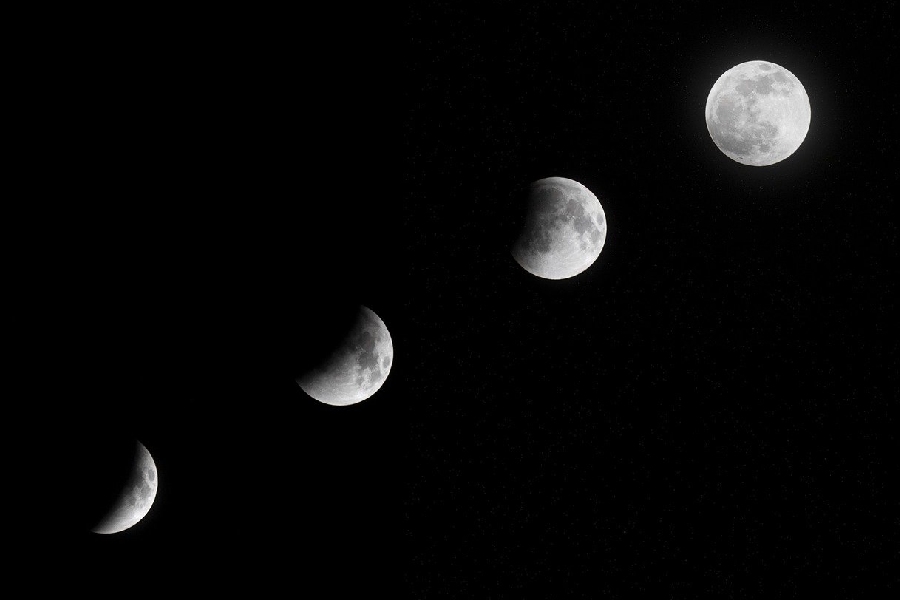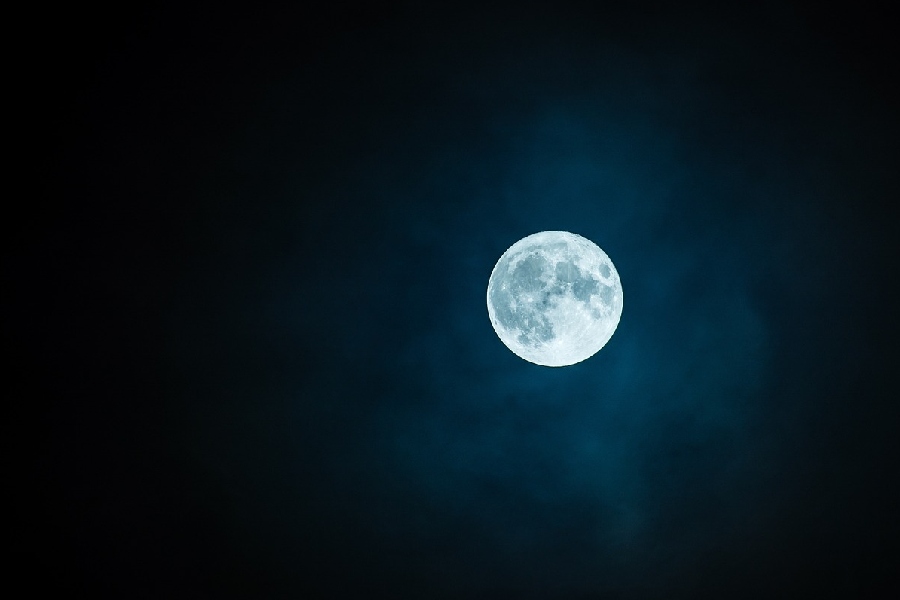When you look up at the Moon, you’ll notice it doesn’t always look the same. Sometimes, it’s a bright, full circle, and other times, you can only see a sliver crescent. The Moon goes through regular phases where its appearance changes. What are these phases of the Moon?
The phases occur in a cycle that repeats about once a month. Over this cycle, the Moon will go from completely dark to fully lit by the Sun and then back to dark again.
The changing phases are caused by the relative positions of the Sun, Moon, and Earth. As the Moon orbits around us, we see different amounts of its side illuminated by the Sun.
In this article, we’ll take a closer look at what exactly causes this cycle and the names of the primary Moon phases. We’ll also discuss how they have been understood and used by humans throughout history for timekeeping and rituals.
The phases may seem familiar, but the science behind them is quite fascinating. Read on to learn more about the lunar cycle and what makes the Moon appear differently in our sky over time.

What Are the Phases of the Moon?
How many phases of the Moon are there? The Moon phases result from a cyclic interplay between the Earth, Moon, and Sun. Beginning with the New Moon, where darkness shrouds its face, the Moon progresses through the Waxing Crescent, First Quarter, and Waxing Gibbous phases.
The pinnacle is the Full Moon, followed by the Waning Gibbous, Third Quarter, and Waning Crescent phases, completing the cycle back to the New Moon.
This rhythmic dance, dictated by their relative positions, offers a captivating display of changing lunar illumination, encapsulating the dynamic celestial relationship.
The Moon’s Orbit
As the Moon travels around us, its position relative to Earth and the Sun changes. This results in the Moon being lit from different angles over the course of its orbit.
At the new Moon, the Moon is lined up between Earth and the sun. When this occurs, the side of the Moon illuminated by the Sun is facing away from Earth. We cannot see the lit side of the Moon during this phase.
How Many Phases of the Moon Are There
New Moon – The hidden face
The new Moon phase occurs when the Moon is directly between Earth and the Sun in its orbit. With its illuminated side completely facing away, the Moon is dark and invisible to us on Earth.
The new Moon signifies the start of a new lunar cycle. During this time, the Moon rises and sets around the same time as the Sun. The new Moon phase demonstrates the Moon’s continuous orbit and changing relationship with the Sun. This relationship creates the lunar phases.
Some cultures used to celebrate the new Moon as a time of renewal, introspection, and new beginnings. It was seen as a chance to reflect inward during the Moon’s dark, hidden phase before emerging again into light. Even though the new Moon is not visible, it still holds significance as the starting point of the lunar calendar.
The waxing crescent Moon
After the new Moon, we begin to see a thin crescent of illuminated Moon on the right side. This waxing crescent phase signals the transition from the fully dark new Moon to a Moon that is gradually becoming more illuminated.
As the Moon moves in its orbit, the crescent grows thicker over the next few days. More of the Moon’s surface becomes lit by the sun.
The waxing crescent holds cultural and astronomical significance. It marked the start of ancient lunar calendars. Astronomically, it shows the Moon shifting into a position where its illuminated side is visible from Earth.
First quarter – Illumination on the right
The first quarter phase
The first quarter phase occurs approximately one week after the new Moon. At this point, half of the Moon’s disk appears illuminated from Earth’s perspective.
Specifically, during the first quarter, the lit half is on the Moon’s right side. The Moon has completed about a quarter of its orbit around Earth.
Meaning of first quarter
Reaching the first quarter was traditionally seen as an important milestone in the lunar cycle. The Moon is halfway between completely dark and fully bright.
In astrology, the first quarter was viewed as a propitious time to commence new endeavors and projects. Astronomically, it shows the progress of sunlight across the Moon’s surface.
Waxing gibbous – Approaching fullness
As the Moon progresses in its orbit after the first quarter, the part illuminated by the sun grows larger each night. More than half but not yet fully illuminated, this phase is called ‘the waxing gibbous’.
During waxing gibbous, roughly three-quarters of the Moon’s disc appears bright. The area expands toward the eastern rim, nearing the full Moon phase.
The Moon rises in the late afternoon and remains visible through most of the night at this point in the lunar cycle. The waxing gibbous afforded ancient people longer evening Moonlight.
They would gather under the brightening celestial orb and prepare for the peak illumination soon to come. To them, the waxing gibbous symbolized the buildup of magic and manifestations leading to the full Moon’s power.

Full Moon – The Moon’s radiant face
The full Moon phase occurs when the Moon has completed half its orbit and is on the opposite side of Earth from the Sun. With the Earth between the Sun and Moon, the lunar nearside is fully illuminated by sunlight.
A spectacular sight, the Full Moon appears as a bright, completely lit orb dominating the night sky. Its large apparent size and luminous glow awed ancient cultures.
Full Moons came with celebrations and rituals for abundance. The full Moon rises around sunset and sets around sunrise. At night it shines longer, higher, and brighter than any other phase.
Its illumination allows farmers to work fields and travelers to voyage under plentiful Moonlight. For cultures worldwide, the vibrant full Moon still holds magical and auspicious meaning today.
Waning gibbous – Gradual diminishment
After a full Moon, the visible illuminated portion of the Moon gradually decreases as it orbits around Earth toward the new Moon phase. This period is known as the waning gibbous lunar phase because more than half, but not all, of the lunar disk remains bright.
Over the multi-day waning gibbous phase, the bright fraction shrinks each night as the shadow slowly consumes more of the lunar globe from the reverse direction of its orbital trajectory as we view it from Earth.
When about two weeks of the lunar month have passed since the full Moon, half of the lunar surface once again glows, announcing the arrival of the last quarter Moon phase.
Third quarter – Illumination on the left
In the last or third quarter, half of the Moon’s disk is illuminated, but now on the left side. This occurs about three weeks after the new Moon, as the Moon has completed about three-quarters of its orbit.
The last quarter Moon has some unique properties. It rises around midnight and appears at its highest point in the sky around dawn. In the last quarter, the Moon exhibits libration, which allows us to peek around the edge at hard-to-see parts of the lunar surface.
Significance of last quarter
Seeing the left side illuminated conveys the Moon is moving toward complete darkness. Some cultures saw this as a time of reflection before the renewal of the next new Moon
The Moon entering its last visible phase was seen as a powerful time of release. People would let go of what no longer served them before the new lunar cycle began. Endings made space for new beginnings, and the darkness invited soul-searching and inner renewal. The fading crescent Moon symbolizes this transition.
Waning crescent – A fading sliver of light
In the waning crescent phase, only a slim, illuminated crescent is visible on the Moon’s left side. The crescent shrinks nightly as less sunlight is reflected.
The waning crescent Moon rises shortly before dawn. It appears low on the eastern horizon just before sunrise. This phase lasts about 7-8 days as the Moon transitions back to complete darkness at the new Moon.
Approaching the New Moon
The waning crescent signifies the Moon is nearing the end of its cycle as darkness returns and the alignment shifts.
The slim crescent previews the coming new Moon as the Moon orbits into alignment with its darkened side facing Earth.
Lunar symbolism
Many cultures saw the fading crescent as a time of completion and preparation for renewal. It represented clearing away the old for new beginnings at the start of the next lunar cycle.
The waning crescent Moon was seen as a time of inward focus and contemplation. People would reflect on the past lunar cycle and set intentions for the new cycle ahead. The Moon’s fading light created space for inner wisdom and intuition before its renewal.
Conclusion
We have journeyed through the different phases of the Moon, from the barely-there crescent to the full brilliance of the full Moon. We’ve seen how the Moon’s phases depend on the relative positions of the Sun, Moon, and Earth.
The new Moon occurs when the Moon is between the Earth and the Sun. The full Moon is visible when the Earth is between the Sun and the Moon. As the Moon orbits the Earth, its appearance changes from our vantage point, creating a sequence of phases.
It is a cosmic dance that has captivated humans since the beginning of time. We hope this explanation has helped elucidate the mechanics behind the Moon’s phases and deepened your appreciation for this celestial phenomenon. The light of the Moon guides us in the darkness and reminds us we are part of a larger cosmos.
